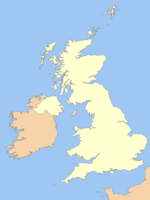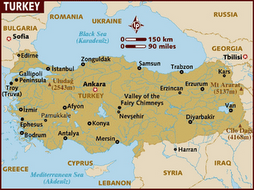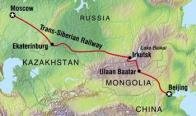 Salkantay trek
Salkantay trekI decided to go on a 4 day trek to reach Machu Picchu. Not the famous Inca Trail, as thats booked out months in advance, but the Salkantay trek. This trek takes you close to Mt Salkantay (peak of over 6000m), over a pass of 4600m before decending into the jungle and river valleys, and of course ending up in Aguas Caliente for a morning hike up to Peru`s most famous ruins.

 It was a great walk, covering very different terrain... from snow capped peaks strewn with large boulders (presumeably from previous glaciers), to lush river valleys. We had horses to carry some of our stuff and the camping gear, two guides and a cook to look after our food (not bad), but facilities were basic - a distinct lack of toilets along the way, and tents
It was a great walk, covering very different terrain... from snow capped peaks strewn with large boulders (presumeably from previous glaciers), to lush river valleys. We had horses to carry some of our stuff and the camping gear, two guides and a cook to look after our food (not bad), but facilities were basic - a distinct lack of toilets along the way, and tents 
 that weren`t all that waterproof... luckily it didnt rain for long! Luckily too, it was a great group of people from all around the world - enthusiastic and friendly. Our guide told us the trek is about twice the length of the inca trail, and passes a higher peak... I`d still love to do the inca trail sometime, but can heartily recommend this one as an alternative. Did I mention we visited beatiful hotsprings, the bus almost backed off the side of the road/cliff trying to make room for traffic coming the other way, we rode in a basket suspended by wire across a river, and we all thoroughly enjoyed a hot shower at the end
that weren`t all that waterproof... luckily it didnt rain for long! Luckily too, it was a great group of people from all around the world - enthusiastic and friendly. Our guide told us the trek is about twice the length of the inca trail, and passes a higher peak... I`d still love to do the inca trail sometime, but can heartily recommend this one as an alternative. Did I mention we visited beatiful hotsprings, the bus almost backed off the side of the road/cliff trying to make room for traffic coming the other way, we rode in a basket suspended by wire across a river, and we all thoroughly enjoyed a hot shower at the end  of the trek!
of the trek!
Machu Picchu
 Since we`d walked almost everywhere else, we got up at the crazy hour of 4 to start to hike up to the ruins, which opened with the first busloads at 6am. At that hour it was a bit mysterious, with low clouds drifting across, obscuring the ruins in parts. We had a guided tour taking in the main temples, and were then let loose. Its pretty amazing the extent of the ruins and their condition... and there`s surely more hiding under some of the tree cover. Pity most of the things found here are in a Yale University museum in the US. But gotta love the llamas roaming round and apparently admiring the view!
Since we`d walked almost everywhere else, we got up at the crazy hour of 4 to start to hike up to the ruins, which opened with the first busloads at 6am. At that hour it was a bit mysterious, with low clouds drifting across, obscuring the ruins in parts. We had a guided tour taking in the main temples, and were then let loose. Its pretty amazing the extent of the ruins and their condition... and there`s surely more hiding under some of the tree cover. Pity most of the things found here are in a Yale University museum in the US. But gotta love the llamas roaming round and apparently admiring the view! Having climbed several steps and mountains over the last few days we figured whats one more, and headed up Waynu Picchu, the mountain overlooking Machu Picchu that only 400 people a day are allowed to climb. The view was great - the clouds cleared so that they just drifted across, and we could see down to the valley where we had walked around the previous day. From here I took a mysterious path with steps hugging the rockface and ladders in parts down to some caves and temples, which was nice and peaceful with only a few visitors... mind you the hike back up all the steps was a real killer!
Having climbed several steps and mountains over the last few days we figured whats one more, and headed up Waynu Picchu, the mountain overlooking Machu Picchu that only 400 people a day are allowed to climb. The view was great - the clouds cleared so that they just drifted across, and we could see down to the valley where we had walked around the previous day. From here I took a mysterious path with steps hugging the rockface and ladders in parts down to some caves and temples, which was nice and peaceful with only a few visitors... mind you the hike back up all the steps was a real killer! Back to the main ruins, I wandered round exploring, tuning into tour guides to pick up more info along the way. Theres still a lot of theories about the place and its use, so its hardly surprising that to the untrained eye you just see house after house or more accurately walls, doorways and windows! Still, get to the top area, sit down and you cant help but admire the picture postcard view of the city and surrounding mountains.
Back to the main ruins, I wandered round exploring, tuning into tour guides to pick up more info along the way. Theres still a lot of theories about the place and its use, so its hardly surprising that to the untrained eye you just see house after house or more accurately walls, doorways and windows! Still, get to the top area, sit down and you cant help but admire the picture postcard view of the city and surrounding mountains.Back down the mountain, and we caught my first Peruvian train to Ollyantambo and then bus back to Cusco.




















